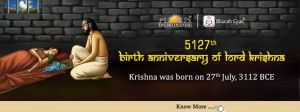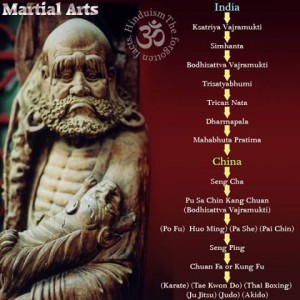Sri Sri explains the Symbolism of Ganesh Chaturthi:-
Ganesh Chaturthi is celebrated on the day on which Lord Ganesha is believed to bestow his presence on earth for all his devotees. Ganesha, the elephant-headed son of Shiva and Parvati, is worshipped as the supreme god of wisdom, prosperity and good fortune. Though it is celebrated as the birthday of Lord Ganesha, the symbolism behind the festival is much deeper.
The essence of Ganeshji is brought out beautifully by Adi Shankara. Though Ganeshji is worshiped as the the elephant-headed God, the form (swaroop) is just to bring out its parabrahma roopa. Ganeshji is described as Ajam Nirvikalpam Niraakaaramekam. This means that Ganeshji is never born.
He is Ajam (unborn), he is Niraakaar (formless) and he is Nirvikalpa (attributeless). Ganeshji symbolises the consciousness which is omnipresent. Ganeshji is the same energy which is the reason for this universe, from which everything is manifested and it’s the same energy in which the whole world will be dissolved. Ganeshji is not somewhere outside of us, but the very centre of our life. But this is very subtle knowledge. Not everybody can perceive the formless without the form. Our ancient Rishis and Munis knew this; so they created the form for the benefit and understanding of people at all levels. Those who can’t experience of the formless, over a period of sustained experience of manifested form reach the formless Brahman.
So in reality, Ganeshji is formless; yet there is a form to which Adi Shankara prayed and that form carries the message of the formlesness of Ganeshji. Thus, the form serves as the starting point and gradually the formless consciousness begins to manifest. Ganesh Chaturthi marks a unique art of reaching formless Paramatma called Lord Ganesh by repeated worship of the manifest form of Ganesha. Even the Ganesh Stotram, the prayers recited in the praise of Ganeshji, conveys the same. We pray to Ganeshji in our consciousness to come out and sit in the idol for us for a while so that we can play with him. And after the puja, we again pray asking him to go back to where he comes from; that’s our consciousness. While he is in the idol, we offer back whatever God has given us through the puja of the idol.
The ritual of immersing (visaran) the idols after few days of worship reinforces the understanding that God is not in the idol, it’s inside us. So experiencing the omnipresent in the form and deriving joy out of the form is the essence of the Ganesha Chaturthi festival. In a way such organised festivity and worships lead to an upsurge in enthusiasm and devotion.
Ganeshji is the lord of all the good qualities in us. So when we worship him, all the good qualities will blossom in us. He is also the lord of knowledge and wisdom. Knowledge dawns only when we become aware of the Self. When there is inertia, there is no knowledge, no wisdom, nor is there any liveliness (Chaitanya) or progress in life. So the consciousness has to be awakened and the presiding diety of consciousness is Ganeshji. That’s why before every puja, the Lord Ganesha is worshiped to awaken the consciousness.
Therefore, install the idol, worship it with infinite love, meditate and experience Lord Ganesha from within. This is the symbolic essence of Ganesh Chaturti festival, to awaken the Ganesha tatva which is masked inside us.
Ganpati Bappa Moriya
Mangal Murti Moriya
Posted from WordPress for Android


